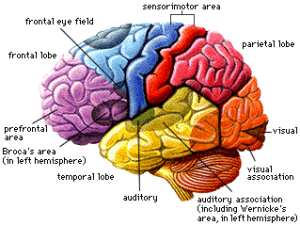How to develop your awareness
Day in and day out our brains are having to think and take in millions of bits of information but just how much of this are we fully, properly aware of?
 It is important to be keenly aware even in this age when we are not (normally) being chased by anything that is going to eat us. Why? Because that is when spotting opportunities and seizing them becomes a reality. If you understand the importance of this you can train your brain to pay attention and avoid the business sabre-toothed tigers that still stalk us.
It is important to be keenly aware even in this age when we are not (normally) being chased by anything that is going to eat us. Why? Because that is when spotting opportunities and seizing them becomes a reality. If you understand the importance of this you can train your brain to pay attention and avoid the business sabre-toothed tigers that still stalk us.
From my train crash injuries, I have been left with a right hand that has hardly any feeling in it. It also occasionally spasms either tightly shut or fully open as well as jerking entirely of its own volition. Having broken vast amounts of crockery, and inadvertently thrown my butter knife at my dinner companion sitting to my right, I quickly learned that I had to pay attention to what my right hand was doing.
To start off with that meant deliberately staring at it when expecting it to function in a normal way. Over time my body adapted so that I can now keep an eye on it out of the peripheral vision of my right eye so that hardly anyone notices that I am doing so. Now I know my circumstances are extreme in comparison with most people, but it has taught me a valuable lesson in awareness.
Brain awareness makes business sense
This is also how you learn to develop your awareness. To start off with you may need to slow down and deliberately look at everything carefully. Do it often enough and you’ll find ‘peripheral’ awareness kicks in and it will become second nature and you will easily see things that others are missing and that is when you can grab them for yourself.
The devil is in the detail and developing your brain awareness helps you identify those small shifts in your surroundings that can signal either danger or opportunity.
As a secondary effect, it helps you develop your empathy as it requires you to observe outside of yourself and helps you pick up the nuances in emotions that otherwise you may miss. Why is this important in business? People often mask their dissatisfaction with a situation to appear polite or because they want to avoid confrontation. Thus, a deal is lost because one or more participant is dissembling and the other is unaware of it. Misunderstandings arise because one party is distracted by the “big” picture and misses an important detail.
As you develop your brain awareness and start paying attention you can clear away the distracting clutter and information overload and hone in on the important parts. All this clutter in our information loaded world can cause you to lose track and miss something vital so it is crucial you learn how to cut through the noise.
Your brain’s neurons need oxygen and glucose to survive, and all this information uses up your brain’s energy. Every status update you read on Facebook, every tweet or text message you get or send is competing for resources in your brain with important things like whether you get that report done, remembering to call the credit card company about that strange charge, or figuring out how to smooth things over with your sweetie after a spat last night.
https://www.thebestbrainpossible.com/how-to-train-your-brain-to-pay-attention/
Brain awareness leads to clarity of action
 Once you can train your brain to observe and develop this peripheral vision you subconsciously process the useful information it is collecting. The next step is to clear away the distractions to allow you to focus on action steps to move you forward. It is a delicate balancing act between collecting and processing and discarding information.
Once you can train your brain to observe and develop this peripheral vision you subconsciously process the useful information it is collecting. The next step is to clear away the distractions to allow you to focus on action steps to move you forward. It is a delicate balancing act between collecting and processing and discarding information.
The most successful entrepreneurs are those who spot, then seize opportunities and they operate with a kind of antenna that is constantly aware of their surroundings and can spot details that others miss.
Whether your brain is the type that takes in too much or too little information you can train it to become more aware and then more focused through meditation and breathing techniques.
If you lack focus, then practice total focus on a single object, always bringing your attention back to that object in a quiet room and breathing to a count of four in, hold for four and four out to steady your breathing.
If being over-focused is an issue then sit in the same quiet room but allow your gaze to wander, taking in every aspect. Allow yourself to focus on each and every detail of the room, then move onto the next, until you are aware of every nuance of the rooms’ objects and the light and shade.
These techniques help you to balance activity between the prefrontal and parietal cortices of the brain and strengthens the connections between the two.

